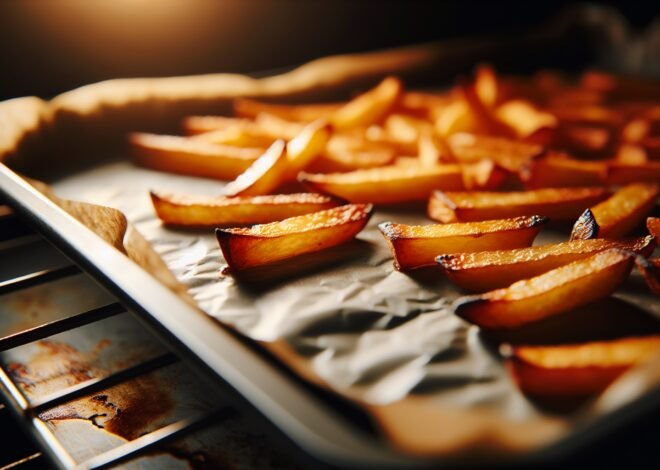
Best Tips for Prepping and Storing Salad for the Week
Prepping and storing salad optimally can save you time and keep your meals fresh throughout the week. Did you know that a well-prepped salad can maintain its vitality for up to five days? This post will guide you through essential tips for washing, cutting, and layering your ingredients. Learn how to choose the right containers and keep your dressings separate to prevent sogginess. Whether you’re meal prepping for health or convenience, these strategies are designed to maximize both flavor and longevity. Dive in to discover how easy it is to enjoy vibrant, crisp salads all week long.
How to Prepare Salads for the Week Ahead
Preparing salads for the week can save you time and ensure nutritious meals are always at hand. With the right techniques, you can keep ingredients fresh and flavorful for days. Dive into this guide where we explore how to choose ingredients, wash and dry greens efficiently, and chop and store vegetables like a pro. Let’s get started on creating delicious and lasting salads that will make your week a breeze.
Choosing the Right Ingredients for Long-Lasting Salads
To ensure your salads last throughout the week, selecting the right ingredients is crucial. Opt for hearty greens like kale, spinach, or romaine, which maintain their crispness longer than delicate varieties. Protein sources like chickpeas, hard-boiled eggs, and grilled chicken add sustenance and keep well in storage. Vegetables such as bell peppers, carrots, and cucumbers are excellent choices due to their durability. Avoid soggy-prone ingredients, like tomatoes or avocados, until the day you plan to eat the salad.
Fresh herbs can elevate your salad but should be used sparingly to prevent them from wilting. Consider adding nuts and seeds for texture and nutrition, as they remain fresh and crunchy. Finally, seasonal produce, when available, not only enhances flavor but also ensures peak freshness.
Step-by-Step Guide to Washing and Drying Salad Greens
Washing and drying greens properly can make a world of difference in their longevity. Begin by filling a large bowl with cold water, submerging the greens to loosen dirt and debris. Agitate gently, allowing dirt to settle. After a few minutes, lift the greens from the water, leaving sediment behind.
Once clean, use a salad spinner for drying. Gently spin the greens until they are dry to the touch. If a salad spinner isn’t available, spread the greens on a clean towel and pat them dry. Properly dried greens prevent sogginess and maintain crispness.
Efficient Ways to Chop and Store Vegetables for Salads
Chopping vegetables efficiently not only saves time but also lets you enjoy a variety of textures in your salads. For uniform pieces, use a sharp knife and stable cutting board. Cut bell peppers into strips or dice, carrots into rounds, and cucumbers into half-moons or cubes. Store these chopped vegetables in airtight containers, separating them by type to maintain their flavors.
Storing chopped vegetables with a damp paper towel on the bottom of the container can extend freshness by absorbing excess moisture. For those short on time, using pre-cut vegetables from the store can be a convenient alternative, though they may not last as long.
Best Practices for Storing Salads for Maximum Freshness
Proper storage is key to enjoying fresh salads all week long. With the right containers and techniques, you can keep ingredients crisp and tasty. In this section, we’ll cover container selection, layering strategies, and storing dressings to avoid soggy salads. These tips will ensure your salads stay fresh and ready to enjoy throughout the week.
Selecting the Best Containers to Keep Salads Fresh
Choosing the right container can make a huge difference in keeping your salads fresh. Opt for glass containers with airtight lids to preserve freshness and flavor. Glass helps maintain temperature and prevents odors from seeping in. Alternatively, consider using BPA-free plastic containers for a lightweight option.
For those on the go, compartmentalized containers are ideal. They keep ingredients separate until it’s time to eat, which prevents sogginess. Jars work well for storing ingredients with layering techniques, offering a grab-and-go solution for busy days.
Layering Techniques to Prevent Soggy Salads
Layering your salad ingredients strategically is crucial in preventing sogginess. Begin with a hearty base, such as grains or protein, at the bottom of the container. **Next, add sturdier vegetables like carrots or bell peppers.** Place delicate ingredients and greens on top to keep them dry until serving.
If including cheese or nuts, sprinkle them last. This order keeps the ingredients that tend to wilt away from moisture, ensuring a fresh and crisp salad. When ready to eat, simply shake the container to mix everything together.
How to Properly Store Dressing for Weekly Salad Prep
Storing dressings separately is essential to maintain the integrity of your salads. Use small **containers or dressing bottles** to keep them apart from the greens and other ingredients. This prevents the salad from becoming soggy before you’re ready to eat it.
Consider dividing homemade dressings into individual portions to make prep days easier. If using store-bought options, transfer a week’s worth into smaller containers to save space and ensure even distribution. Storing dressings at the top of the fridge helps maintain their quality and flavor.
Creative Salad Recipe Ideas for Meal Prep
Inject creativity and variety into your weekly salads with inventive recipes. By incorporating diverse ingredients, you can transform a simple salad into a culinary delight. Explore ideas for protein-packed salads, unique flavor combinations, and nutritious grains and seeds that can boost your meals. These ideas will keep your taste buds excited and your meals satisfying.
Nutritious and Tasty Protein Additions for Salads
Enhance your salads with a variety of protein sources that not only fill you up but also boost nutrition. Consider grilled chicken, which offers a lean and flavorful option. Chickpeas and black beans bring plant-based proteins and fiber. For seafood lovers, canned tuna or grilled shrimp add a delicious twist.
Don’t forget about hard-boiled eggs, which are easy to prepare and blend well with most salads. For vegetarians, tofu or tempeh presents an excellent alternative, offering a hearty texture and rich flavors when marinated.
Unique Flavor Combinations to Elevate Your Salad Game
Break away from traditional flavors with unique combinations that excite your palate. Pair sweet and savory components, such as strawberries and feta cheese. Experiment with roasted vegetables like sweet potatoes or beets for deeper flavors.
Introduce a zesty kick by adding citrus fruits like oranges or grapefruits. Nuts such as walnuts or almonds contribute a satisfying crunch, while fresh herbs like basil or mint provide a refreshing note. These unexpected combinations will keep your salads interesting and your taste buds delighted.
Incorporating Nutritious Grains and Seeds into Salads
Grains and seeds offer nutritional benefits and enhance the texture of your salads. Quinoa, a protein-rich grain, is versatile and easy to prepare. Farro or barley adds a chewy texture and nutty flavor, perfect for heartier salads.
For seeds, consider sprinkling chia or flax seeds for their omega-3 content and crunch. Sunflower or pumpkin seeds bring essential nutrients and a delightful bite. Incorporating these elements not only boosts health benefits but also provides a satisfying meal experience.
Conclusion
To keep salad fresh, store individual components separately until ready to serve. Wash greens and let them dry completely to prevent wilting. Use airtight containers for storage and keep ingredients like tomatoes and cucumbers separate to avoid sogginess. Add dressings and toppings only before serving. Refrigerate the salad promptly to maintain freshness.
FAQ
How do you properly wash and dry salad greens before storing?
Rinse salad greens under cool running water to remove dirt and insects. Use a salad spinner to remove excess water, or gently pat them dry with a clean towel.
What is the best method to store salad ingredients to keep them fresh for a week?
Store salad ingredients separately in airtight containers. Keep leafy greens in a dry, sealed container with a paper towel to absorb moisture. Store cut vegetables and fruits in airtight containers or resealable bags.
Can you prepare salad ingredients in advance without them getting soggy?
Prepare ingredients separately and only combine them just before serving. Keep dressings and wet ingredients like cucumbers and tomatoes apart until ready to eat.
How do I prevent cut fruits and vegetables in my salad from browning?
Use acidic solutions like lemon juice or vinegar to coat cut fruits and vegetables. This slows oxidation and helps retain their color.
What are the best containers for storing salad to maintain freshness?
Choose glass or BPA-free plastic containers with tight-sealing lids. These prevent air exposure and help maintain freshness and crispness.
How should leftover salad be stored to retain its flavor and texture?
Transfer leftover salad to an airtight container and refrigerate immediately. Keep moist and dry ingredients separate to prevent sogginess.











